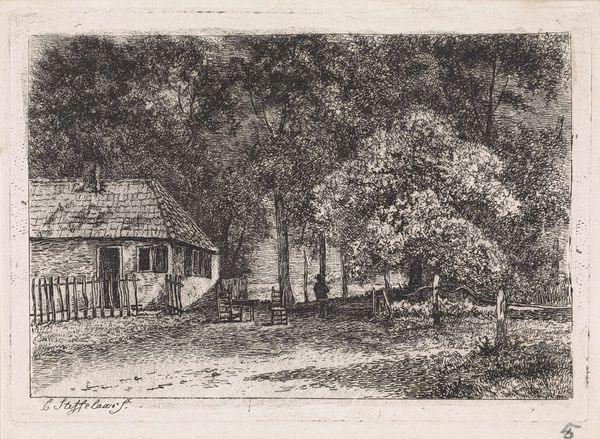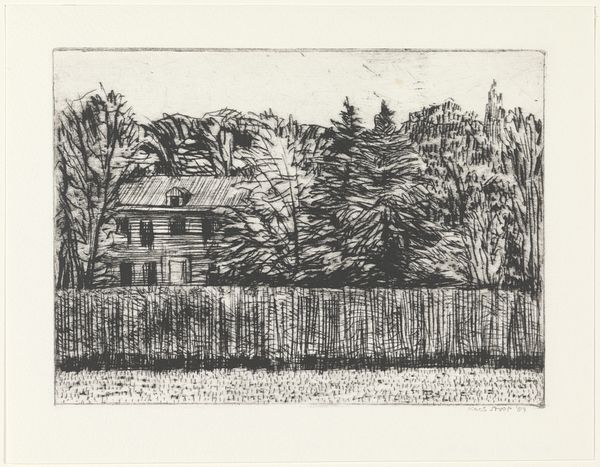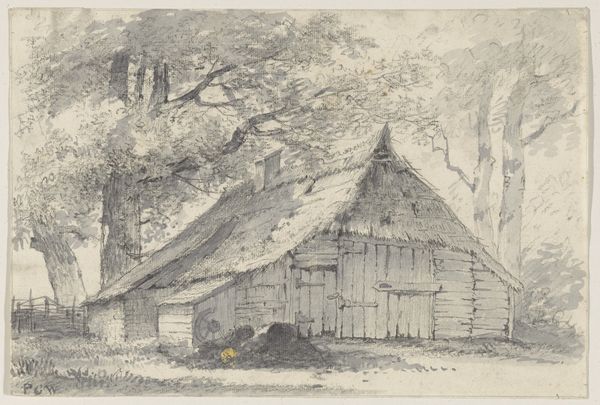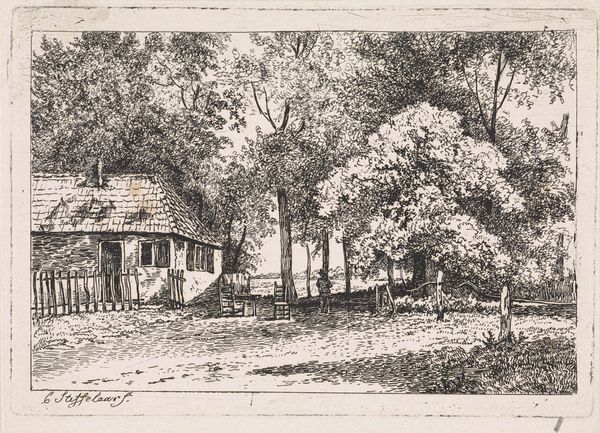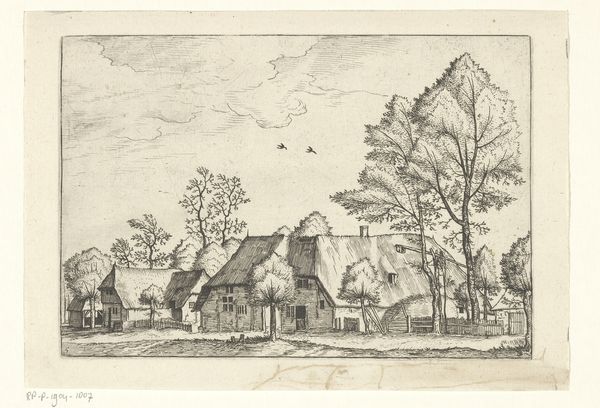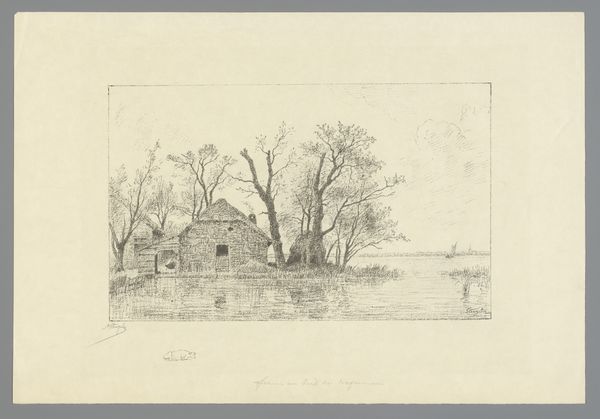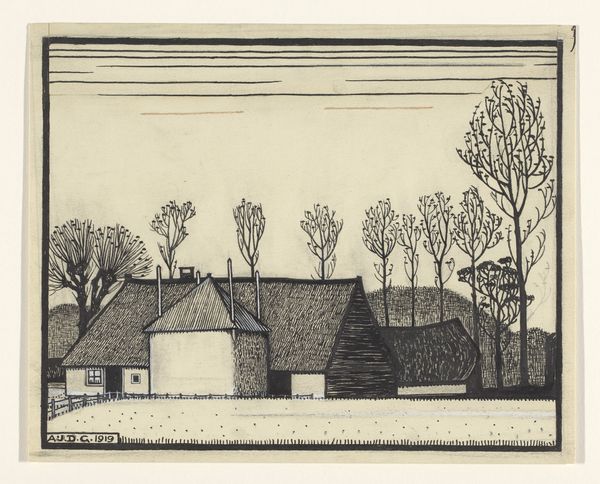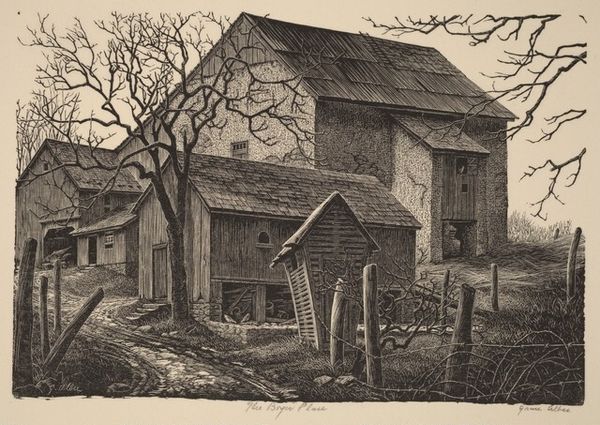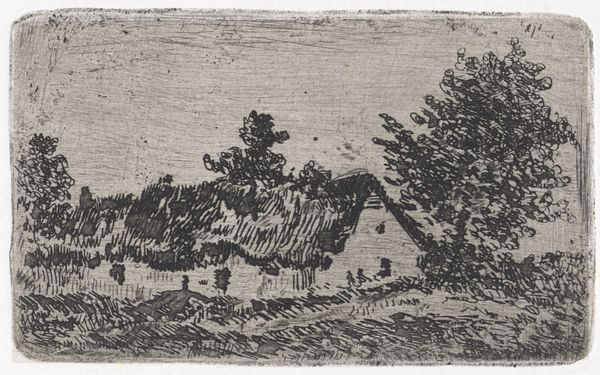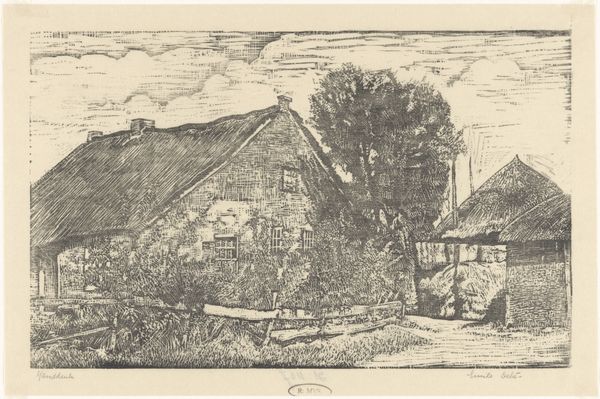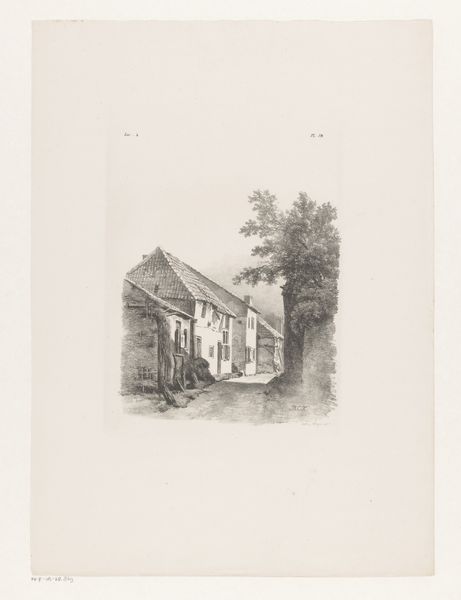
print, etching
# print
#
etching
#
landscape
#
etching
Dimensions: height 225 mm, width 310 mm
Copyright: Rijks Museum: Open Domain
Curator: Welcome. Today we're observing Emilius Wilhelmus Dehé's "Farmhouse with thatched roof in Blaricum." It's a landscape etching, created sometime between 1896 and 1931. Editor: It has such a striking graphic quality, doesn’t it? All that textured detail rendered in monochrome creates an immediate sense of rustic solidity, but the composition feels…heavy. Curator: The choice of subject aligns with the late 19th-century artistic trend of idealizing rural life. Artists were reflecting the rising tide of industrialization and urbanization with their works depicting the simplicity and purity of agricultural communities. Blaricum, specifically, was becoming known as an artist’s village at that time. Editor: Yes, and you see the signs of that clearly in the organization of elements. The building fills the frame and emphasizes form, and is in the style of the old Dutch Masters and their detailed landscapes. What I’m wondering is about the very shallow picture plane--is this perhaps a strategy to compress the space? The details throughout are consistent whether you are close or distant. Curator: The density serves a cultural purpose too, maybe even pushing back on social upheaval. Remember that rural populations were being pulled towards urban centers. A rendering of such architecture becomes both a statement of cultural pride, and an instrument of cultural memory. A document that captures the building tradition. Editor: That makes sense. The thatched roof, dominates everything with this very heavy quality. Perhaps there's something self conscious in the artist's awareness about preserving vanishing heritage? Curator: Certainly possible. What seems clear is Dehé's awareness of his audience, an increasingly urban one interested in what the countryside signified. Editor: Yes. What an interesting balance of artistry and document. It also presents such formal choices as a function of both technique and content. I'm taken by how it transforms into something very poignant upon closer consideration. Curator: Indeed. By exploring it from both the angle of materiality and cultural context, it helps illuminate the moment of its creation as a work of art.
Comments
No comments
Be the first to comment and join the conversation on the ultimate creative platform.


